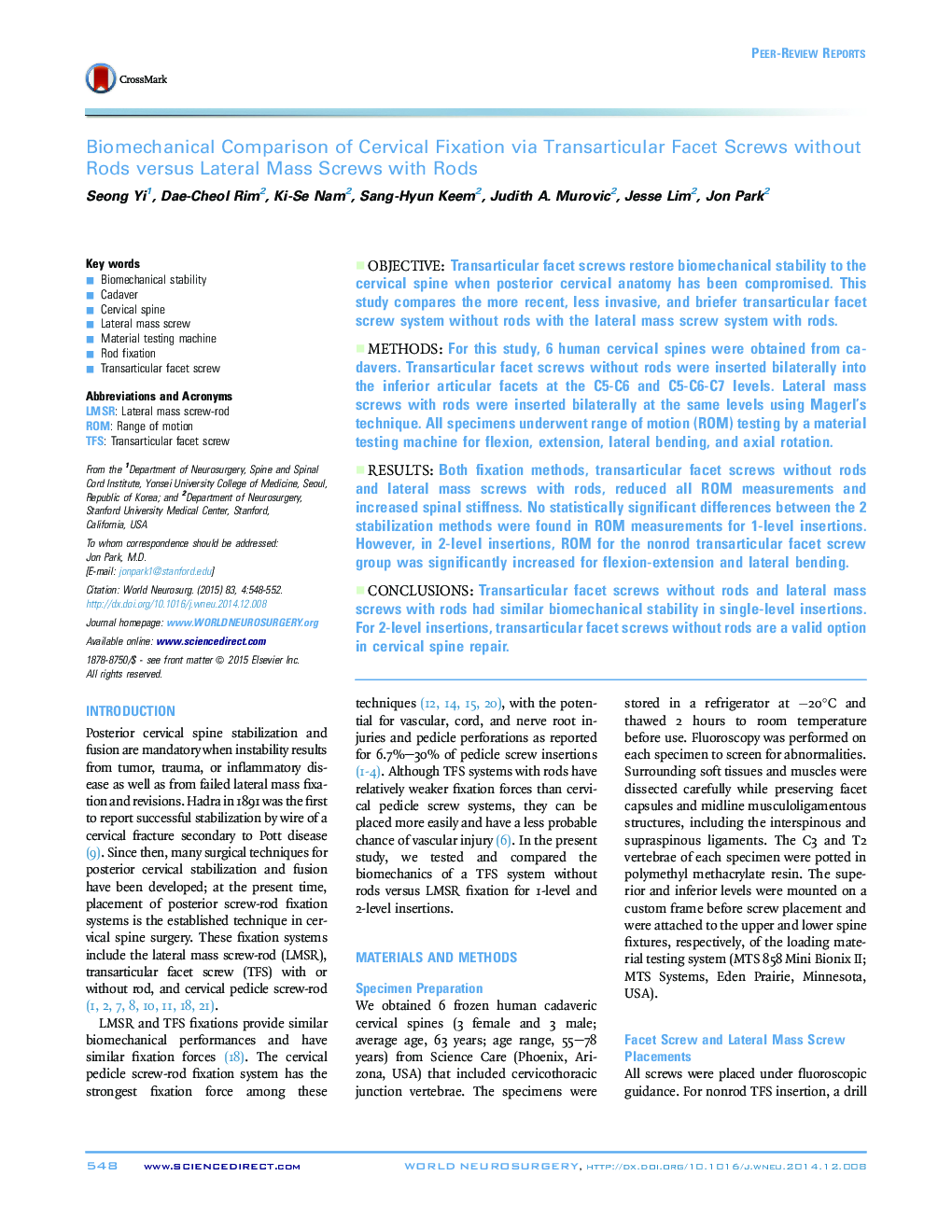| Article ID | Journal | Published Year | Pages | File Type |
|---|---|---|---|---|
| 3094972 | World Neurosurgery | 2015 | 5 Pages |
ObjectiveTransarticular facet screws restore biomechanical stability to the cervical spine when posterior cervical anatomy has been compromised. This study compares the more recent, less invasive, and briefer transarticular facet screw system without rods with the lateral mass screw system with rods.MethodsFor this study, 6 human cervical spines were obtained from cadavers. Transarticular facet screws without rods were inserted bilaterally into the inferior articular facets at the C5-C6 and C5-C6-C7 levels. Lateral mass screws with rods were inserted bilaterally at the same levels using Magerl's technique. All specimens underwent range of motion (ROM) testing by a material testing machine for flexion, extension, lateral bending, and axial rotation.ResultsBoth fixation methods, transarticular facet screws without rods and lateral mass screws with rods, reduced all ROM measurements and increased spinal stiffness. No statistically significant differences between the 2 stabilization methods were found in ROM measurements for 1-level insertions. However, in 2-level insertions, ROM for the nonrod transarticular facet screw group was significantly increased for flexion-extension and lateral bending.ConclusionsTransarticular facet screws without rods and lateral mass screws with rods had similar biomechanical stability in single-level insertions. For 2-level insertions, transarticular facet screws without rods are a valid option in cervical spine repair.
